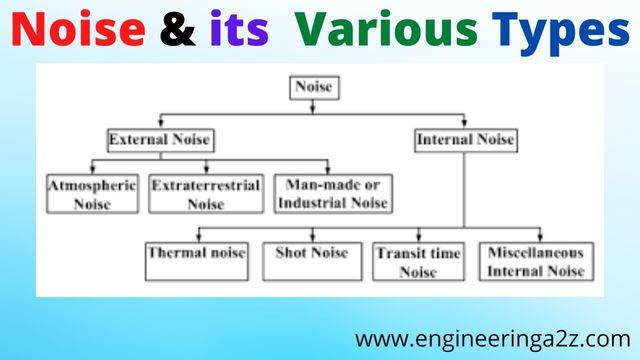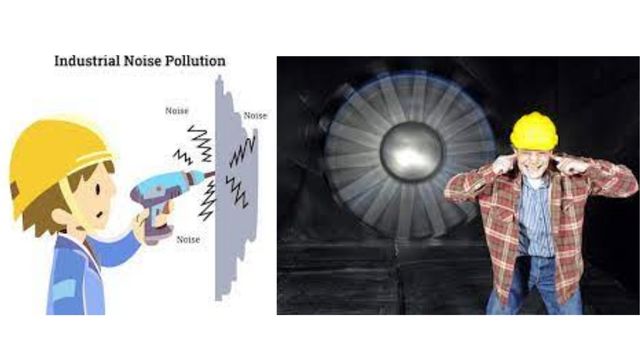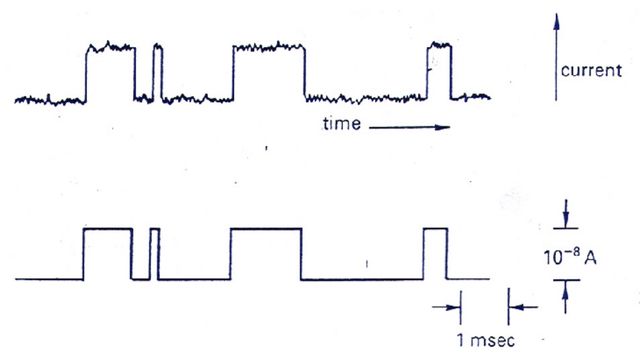
Table of Contents
Definition of Noise
In electrical terms, noise may be defined as an unwanted form of energy which tends to interfere with the proper reception and reproduction of transmitted signal.
For example in receivers, several electrical disturbances produce noise and thus modifying the required signal in an unwanted form. In TV receiver noise may produce ‘snow’ which becomes superimposed on the picture output. In actual the noise may limit the performance of the a communication system.
Noise is an unwanted, random and indeterministic electrical signal, which interfere with reception and reproduction of transmitted signal.
Noise con affect sensitivity of receivers and can also cause reduction in Band Width.
Classification of Noise
There are mainly two ways of classifying the noise as under.
- External Noise
- Internal Noise
External Noise
The noise created outside the receiver is called External noise. The external noise con’t be analysed quantitatively that’s why it cannot be controlled. Thus to reduce the effect of external noise, the only way is to shift the communication system to other place or Location which has comparatively smaller noise. Thus due to this reason, the satellite earth stations are generally Located in noise free valleys.
External Noise can be classified as
- Atmospheric Noise
- Extraterrestrial Noise
- Industrial Noise
1. Atmospheric Noise :
Atmospheric Noise which is also called Static, is produced by lightning discharges in thunderstorm and other natural electrical disturbances which occurs in atmosphere. Atmospheric noise contains spurious radio signals which are distributed over a wide range of frequency.
This is random and spread over RF spectrum used for broadcasting. It has been observed that the field strength of atmospheric noise varies approximately inversely with frequency. This conclude that large atmospheric. Noise is produced in low and medium frequency bands whereas very small noise in the VHF and UHF bands. Thus noise becomes severs at frequencies above 30 MH₂ because higher frequencies, are limited to Los.

2. Extraterrestrial Noise :
The Extraterrestrial Noise is further subdivided as :
a) Solar Noise
b) cosmic Noise
(a) Solar Noise : Solar noise is produced by the radiations emitting from sun because sun is very large body at very high temp. over 6000 °C.
(b) Cosmic Noise: The cosmic Noise is produced from distant stars (as they have high temperature). Also called black body noise or thermal noise and is uniformly distributed over the entire sky.
3. Industrial Noise :
Industrial Noise ranges between 1 to 60 MHz and occurs in urban, suburban & industrial areas. The industrial noise is produced by arc discharge. The Source of this noise are automobiles and aircraft ignition, electric motor, switching equipment’s, leakage from high voltage line, heavy electrical machines etc. Example noise in substation (Power transformer) also cover in industrial noise.

Internal Noise
Internal noise is that type of noise which generated internally the circuit or within the system or receiver. Noise created by the active/passive devices found in receivers. Internal noise may be treated quantitatively and con also be reduced or minimized by proper system design. This noise is proportional to band width over which it is measured. Internal noise are further categorized into following types:
- Thermal Noise
- Shot Noise
- Flicker Noise
- Burst Noise
1. Thermal Noise :
The thermal noise or the white noise which is generator in a resistor or the resistive Component of the circuit. It is due to the rapid and random motion of molecules electrons inside the resistance.
Noise generated by a register is proportional to its absolute temperature and bandwidth over which noise is measured.
Pn α TB =KTB
K is Boltzmann’s Constant = 1.38× 10-22 J/k
T = Absolute temp,
k= 273 + °C.
B = Bandwidth
Pn = Noise power output of
2. Shot Noise:
This type of noise is caused by shot effect in all amplifying devices and active devices. This type of noise is caused by random variation in the arrival of electron or holes at the output electrodes of an amplifying devices.
3. Flicker Noise OR Low freq. Noise Or 1/f Noise :
This type of noise is observed below few KHz frequency. Its spectral density denser increases with decreases in freq. Thus known as 1/f noise.
This noise becomes significant at freq. lower than 100 Hz.
4. Burst Noise:
It consist of sudden step like transition between two or more discrete voltage or current levels, order of Several hundred microvolt. Current Last from several ms. to sec.








Leave a Reply